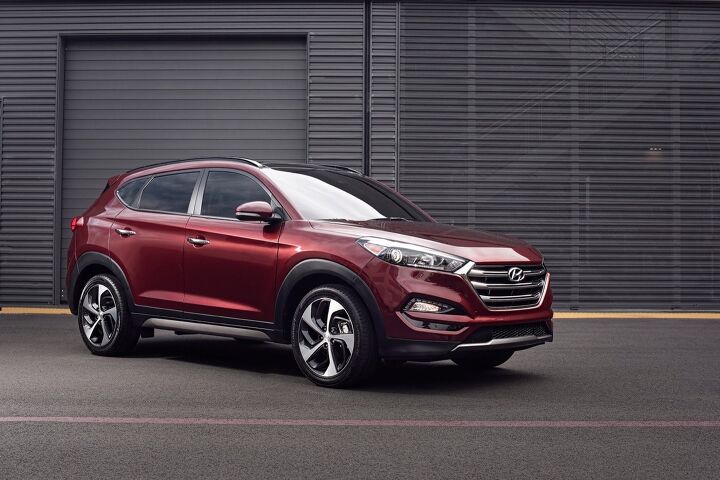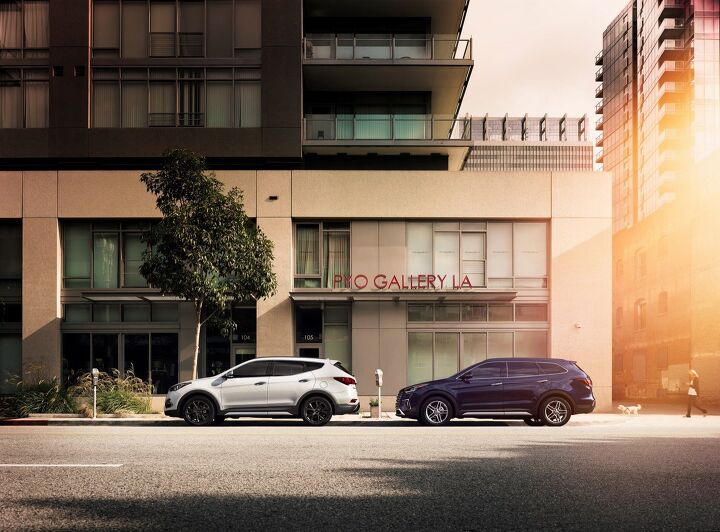QOTD: Are Hyundai's Troubles Nothing A Few SUVs Can't Fix?
This is not what you’d call a long history of sales difficulties for Hyundai, the seventh-best-selling auto brand in America. The 2016 calendar year was Hyundai Motor America’s best ever, the culmination of eight consecutive years of growth.
Yet while Hyundai rapidly — and not unpredictably — grew its U.S. sales coming out of the recession, nearly doubling its sales between 2008 and 2016, the rate of growth was notably slower in 2016 than in prior years. Blame capacity constraints, blame a car-centric lineup in an SUV-leaning world, blame conservative redesigns, blame whatever you want.
Regardless, Hyundai is feeling the pinch now. Year-over-year, sales have declined in each of the last six months. Hyundai’s U.S. CEO, Dave Zuchowski, was ousted just before Christmas 2016. In May 2017, for the first time ever, Kia outsold Hyundai in the United States. And on June 6, 2017, Hyundai Motor America’s vice president for sales, Derrick Hatami, exited the building as well.
All is not well. So then, more SUVs?
Perhaps, but is Hyundai really lacking in the SUV/crossover sector?
Hyundai’s utility vehicle lineup is just as big as Honda’s. The Tucson, Santa Fe Sport, and Santa Fe stack up against the HR-V, CR-V, and Pilot, and where are the accusations that Honda’s utility vehicle lineup is found wanting?
Indeed, heading into May, Hyundai wasn’t short on SUV/crossover supply, either. According to Automotive News, Hyundai had a 72-day supply of utility vehicles as of May 1; a 46-day supply of passenger cars. Meanwhile, Hyundai is increasing the value quotient of its bigger utility vehicles. Hyundai will also eventually add the Kona subcompact crossover at the bottom of the lineup to take on the Honda HR-V.
But the Kona’s timing speaks to Hyundai’s slow reaction to the SUV/crossover craze. Competitors already exist at Buick, Chevrolet, Fiat, Honda, Jeep, Mazda, Mini, Mitsubishi, Nissan, and Subaru. The Santa Fe is more than four years old; the Santa Fe Sport is in its fifth model year. Freshness helps: the not-quite two-year-old, third-generation Hyundai Tucson just reported its best month of U.S. sales ever.
In fact, year-to-date, Hyundai’s three-pronged utility vehicle division is up 20 percent. But while the U.S. market leans on light trucks for more than 60 percent of its sales, Hyundai brand relies on a car division (that’s lost 16 percent of its sales so far this year) for nearly 70 percent of its U.S. volume.
Perhaps Hyundai’s early 2017 downturn is a blip on the radar. Maybe Hyundai can turn the ship around in the second half, during what’s expected to be a market-wide decline.
But if not, what would you do to fix Hyundai Motor America’s current difficulties?
Timothy Cain is a contributing analyst at The Truth About Cars and Autofocus.ca and the founder and former editor of GoodCarBadCar.net. Follow on Twitter @timcaincars.
More by Timothy Cain
Latest Car Reviews
Read moreLatest Product Reviews
Read moreRecent Comments
- SCE to AUX The nose went from terrible to weird.
- Chris P Bacon I'm not a fan of either, but if I had to choose, it would be the RAV. It's built for the long run with a NA engine and an 8 speed transmission. The Honda with a turbo and CVT might still last as long, but maintenance is going to cost more to get to 200000 miles for sure. The Honda is built for the first owner to lease and give back in 36 months. The Toyota is built to own and pass down.
- Dwford Ford's management change their plans like they change their underwear. Where were all the prototypes of the larger EVs that were supposed to come out next year? Or for the next gen EV truck? Nowhere to be seen. Now those vaporware models are on the back burner to pursue cheaper models. Yeah, ok.
- Wjtinfwb My comment about "missing the mark" was directed at, of the mentioned cars, none created huge demand or excitement once they were introduced. All three had some cool aspects; Thunderbird was pretty good exterior, let down by the Lincoln LS dash and the fairly weak 3.9L V8 at launch. The Prowler was super cool and unique, only the little nerf bumpers spoiled the exterior and of course the V6 was a huge letdown. SSR had the beans, but in my opinion was spoiled by the tonneau cover over the bed. Remove the cover, finish the bed with some teak or walnut and I think it could have been more appealing. All three were targeting a very small market (expensive 2-seaters without a prestige badge) which probably contributed. The PT Cruiser succeeded in this space by being both more practical and cheap. Of the three, I'd still like to have a Thunderbird in my garage in a classic color like the silver/green metallic offered in the later years.
- D Screw Tesla. There are millions of affordable EVs already in use and widely available. Commonly seen in Peachtree City, GA, and The Villages, FL, they are cheap, convenient, and fun. We just need more municipalities to accept them. If they'll allow AVs on the road, why not golf cars?




































Comments
Join the conversation
Hyundai thinks that they are "premium" mainstream when in the US they're still the value mainstream guys. Hyundai had a chance to be the new Honda/Toyota----but it's looking like that they blew it by allowing to many non-honored warranty claims and skimping on 100,000+ mile durability.
This is like the 5th article that's mentioned problems at Hyundai which basically aren't problems. I don't understand why this is a topic. They're doing fine. Their product mix is off. The only reason they didn't rush a subcompact CUV to the market is because, unlike GM, they didn't have one waiting in the wings. Ford does, and they still haven't brought it here!